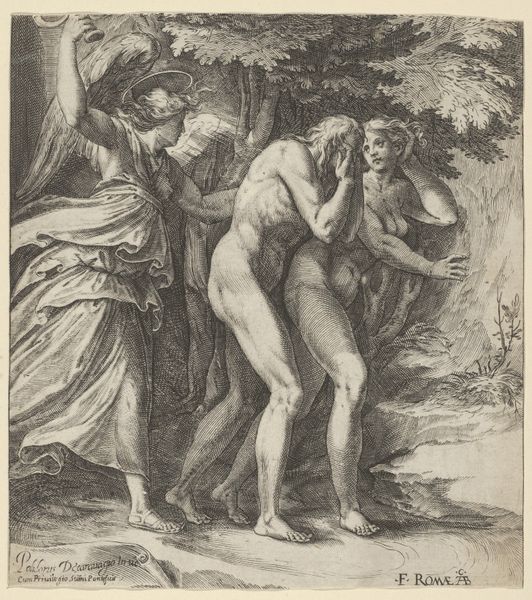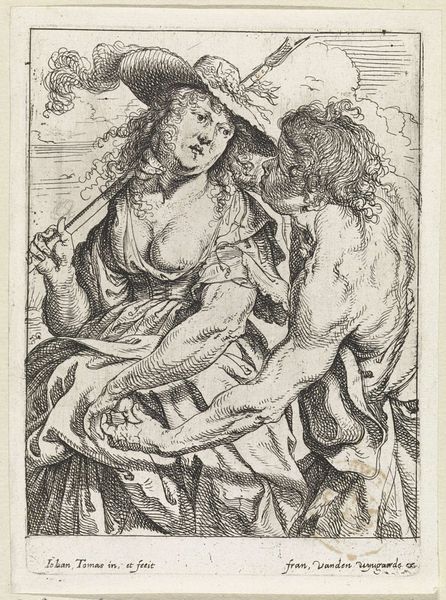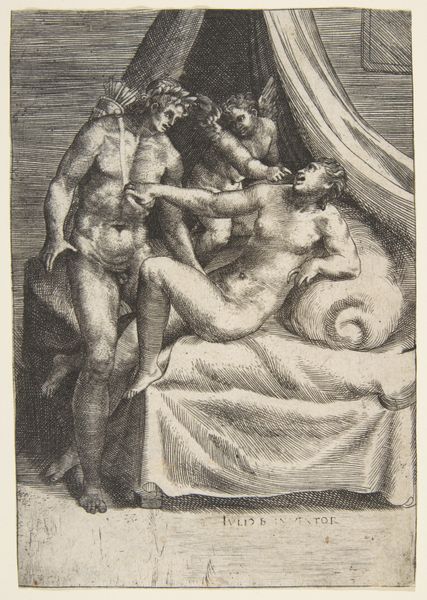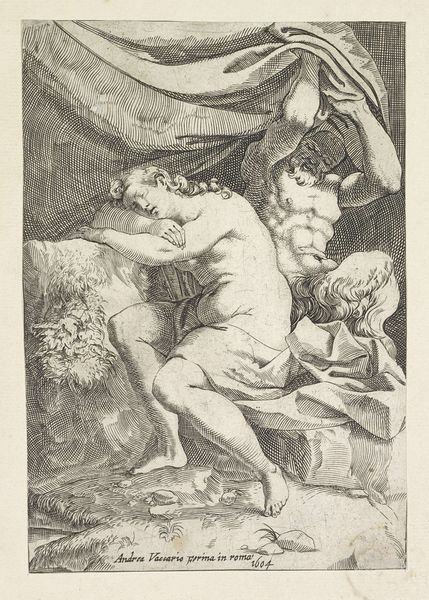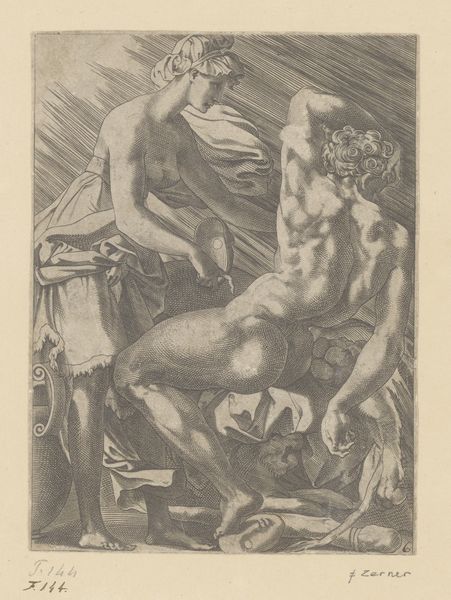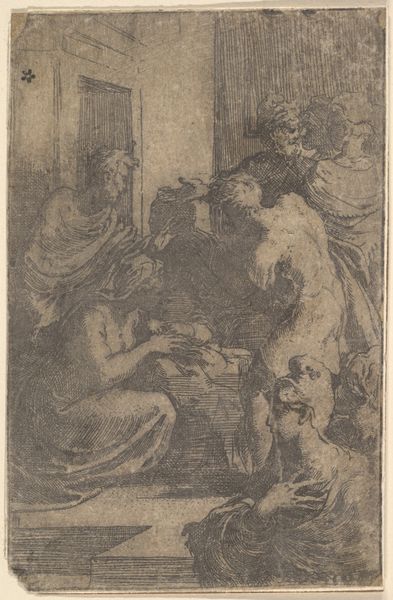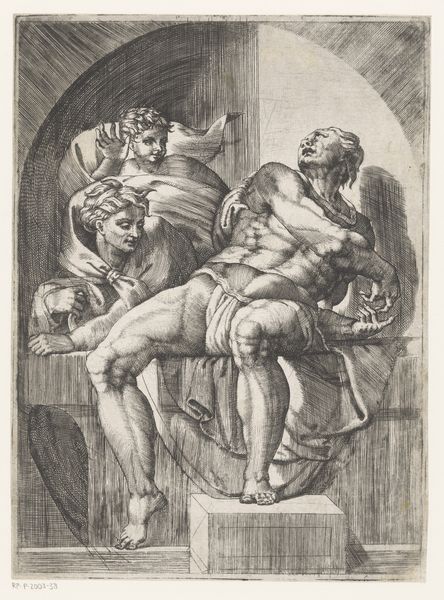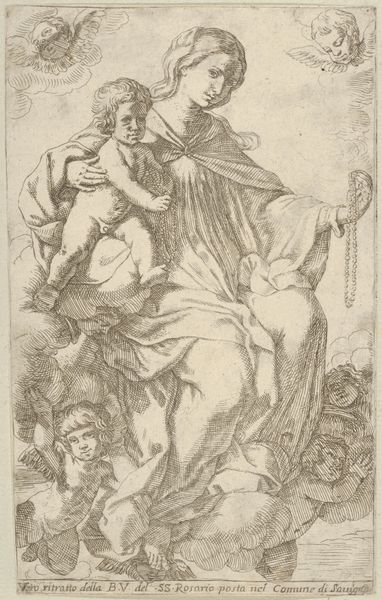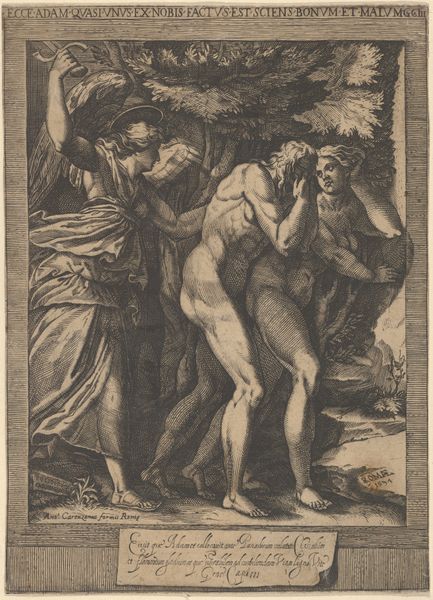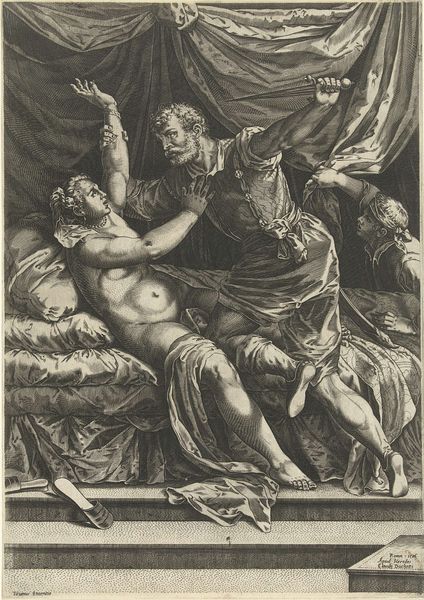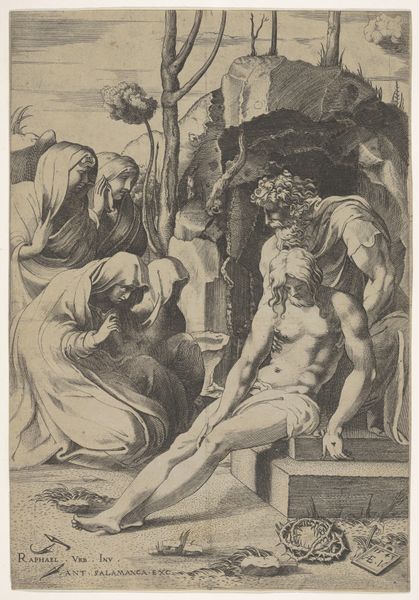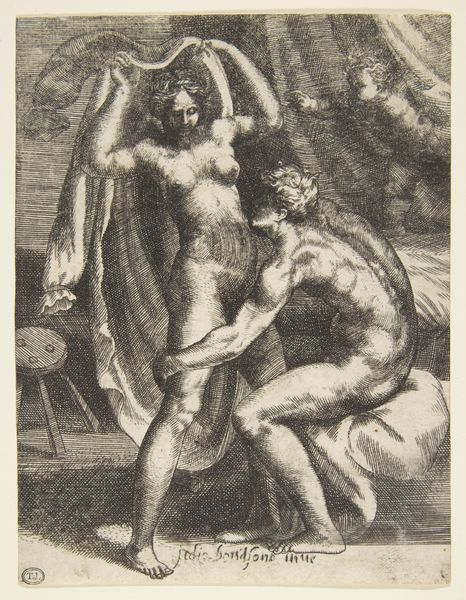
drawing, print, etching, intaglio
#
drawing
#
baroque
# print
#
etching
#
intaglio
#
figuration
#
history-painting
#
nude
Dimensions: Sheet (trimmed): 12 3/16 × 7 13/16 in. (31 × 19.8 cm)
Copyright: Public Domain
Curator: Looking at Jacques Bellange’s "Pietà," made between 1612 and 1616, I am struck by the material qualities of the print. It is an intaglio, an etching, that has a surprising physicality to it. Editor: The drama is what grips me. The raw grief depicted here resonates even now. I'm particularly moved by the vulnerability communicated in the body language. Curator: The print’s production offers fascinating insights into Bellange's workshop practice. Intaglio involves cutting into a metal plate, and the varying depths influence the final image’s tonality. How does that meticulous labor shape our reading? Editor: Considering Bellange worked during a time of significant religious and political upheaval, this "Pietà" serves as a powerful visual commentary on human suffering and the Church’s response. Do you see how Mary isn’t just grieving for her son but perhaps symbolizing the anguish of a community? Curator: Absolutely, the deliberate etching emphasizes the contrast between light and shadow. The lines, their thickness and proximity, become tools of emotional expression. One can also consider printmaking’s broader implications—the creation of multiples democratizes access, and ideas are easily circulated. Editor: This work's placement within a larger conversation about gender roles is key. Mary’s strength, cradling the dead Christ, subverts conventional depictions of female fragility, right? The divine feminine challenges patriarchal religious structures, which adds another layer of interpretation. Curator: Indeed, analyzing the chemical processes and workshop economics allows a tangible connection to the historical context. What resources did Bellange have? Who was consuming this art, and how? These details add more depth to the socio-historical circumstances. Editor: Examining the religious and cultural norms provides essential nuance to its appreciation. It isn't merely about the aesthetic experience but also about unpacking power structures and cultural meanings embedded in the piece. Curator: The way Bellange leveraged the print medium for expressive range—it speaks to his skills as a craftsman and communicator. Editor: Thinking about this work today reminds us that art should inspire self-reflection. This piece offers us to contend with difficult but unavoidable experiences and truths.
Comments
No comments
Be the first to comment and join the conversation on the ultimate creative platform.
